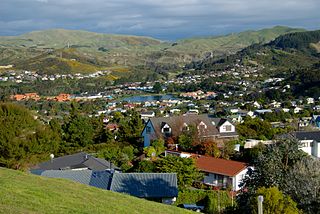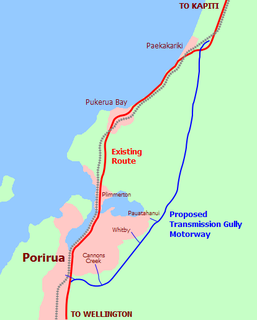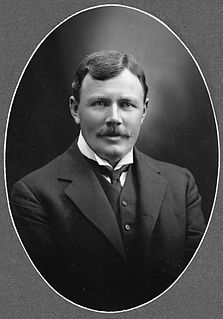
Whitby, a large suburb of Porirua City, New Zealand, located along much of the southern shore of the Pauatahanui Inlet of Porirua Harbour was comprehensively planned in the 1960s and it has been continuously developed since, with current landscaping and expansion in the hills behind the eastern part of Whitby to facilitate the future growth of the suburb.

The suburb of Plimmerton lies in the northwest part of the city of Porirua in New Zealand, adjacent to some of the city's more congenial beaches. State Highway 1 and the North Island Main Trunk railway line pass just east of the main shopping and residential area.

Paremata is a suburb of Porirua, on the Tasman Sea coast to the north of Wellington, New Zealand.

Haywards is a small hillside suburb in the Hutt Valley near Wellington, New Zealand. It is notable for its large electrical substation, which is the main switching point for the Wellington region, and the home of the North Island converter station for the HVDC Inter-Island, which links the North and South Island electricity networks together.

The Transmission Gully Motorway is a 27 km four-lane motorway under construction in Wellington, New Zealand. Construction officially began on 8 September 2014 and completion is scheduled for 2020.
Transmission Gully is a chain of steep-sided, isolated valleys in the Wellington Region of New Zealand. It runs approximately north-south between the Kapiti Coast and Tawa, through the hills behind the city of Porirua. A high voltage transmission line owned by Transpower, which gives the gully its name.

Mana is a suburb of Porirua City in New Zealand. It is a narrow isthmus bounded to the west by the entrance to Porirua Harbour, and to the east by the Pauatahanui inlet of the Porirua Harbour. Mana Island lies about three kilometres west of the isthmus.
Waitangirua is a suburb of Porirua City approximately 22km north of Wellington in New Zealand.
The Wellington and Manawatu Line is an unofficial name for the section of New Zealand's North Island Main Trunk Railway between Wellington and Palmerston North. Originally a government project, the line was constructed by the private Wellington and Manawatu Railway Company and bought by the government in December 1908.

Kenneth Francis Gray, MBE, was an international rugby union player from Porirua, New Zealand. He represented New Zealand in 24 international games, playing lock and later prop forward. He could play on either side of a scrum. In 1970 he refused to tour South Africa in protest at its policy of apartheid and resigned from the game.
John Brian Burke is a former mayor of Porirua City, Wellington Region, New Zealand. Prior to his time as mayor from 1983 to 1998, he served 12 years as a city councillor with six years from 1977 to 1983 as deputy mayor. After a 15-year departure from the city council, in 2013 he stood for election as a city councillor in the eastern ward and was elected with a comfortable majority. He increased his majority at the 2016 local authority elections.
Wellington Suburbs and Country is a former parliamentary electorate in Wellington, New Zealand, from 1911 to 1919. The electorate was combined from Wellington Suburbs and Wellington Country electorates.
Paremata railway station on the Kapiti Line section of the North Island Main Trunk Railway (NIMT) in Paremata in the city of Porirua, New Zealand, is part of the Wellington Region's Tranz Metro suburban rail network.
The Haywards–Plimmerton Line was a railway development proposed several times between 1879 and the 1960s to connect the Hutt Valley and Porirua areas of Wellington via Haywards.
Judgeford is a suburb of Porirua, a city near Wellington, New Zealand. The only buildings are a dog boarding place called Kennels and Cattery, a golf course and houses. The closest school is Pauatahanui School. There is a nearby church called Saint Albans Church, but it is in Pauatahanui not Judgeford.
State Highway 58 is a New Zealand state highway in the Wellington Region linking the Hutt Valley to Porirua.
Moonshine Valley is a thinly populated valley with a population of around 201 in the Wellington Region of New Zealand, centered on the Moonshine Hill Road which leaves State Highway 58 near Judgeford and goes over the Tararua Range to the Riverstone Terraces suburbs and then joins River Road, Upper Hutt. The majority of Moonshine Valley is part of Upper Hutt, although the western part of the valley is part of Porirua.














